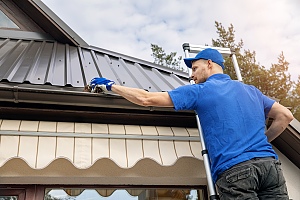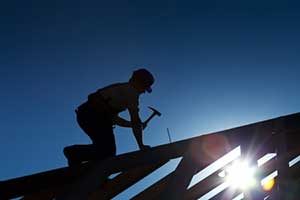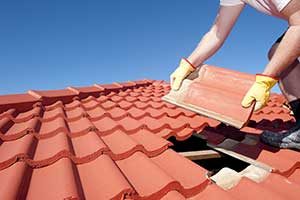The Complete Guide to Choosing and Installing Asphalt Shingles: Everything You Need to Know
 Are you thinking about installing asphalt shingles on your roof but don’t know where to start? You’re in the right place! This complete guide will help you through the process of choosing and installing asphalt shingles. Whether you’re a DIY enthusiast or hiring a professional, this guide offers valuable insights and expert advice.
Are you thinking about installing asphalt shingles on your roof but don’t know where to start? You’re in the right place! This complete guide will help you through the process of choosing and installing asphalt shingles. Whether you’re a DIY enthusiast or hiring a professional, this guide offers valuable insights and expert advice.
From understanding the different types of asphalt shingles to picking the right color and style for your home, we’ve got you covered. We’ll also dive into the installation process, covering key factors like proper ventilation, insulation, and underlayment.
With our step-by-step instructions and helpful tips, you’ll confidently navigate the entire process. We’ll also highlight common mistakes to avoid, ensuring your investment lasts. By the end of this guide, you’ll be ready to make informed decisions and achieve a beautiful, secure, and durable roof for your home. So, let’s get started!
Types of Asphalt Shingles
There are three main types of asphalt shingles to consider: 3-tab shingles, architectural shingles, and luxury shingles.
- 3-tab shingles: These are the most affordable option, offering a simple and traditional look.
- Architectural shingles: Also known as dimensional or laminate shingles, they provide a more textured appearance and better durability.
- Luxury shingles: These are the top-of-the-line option, offering enhanced aesthetics and performance.
Each type has its own set of advantages and considerations. Understanding these will help you make an informed decision based on your budget, style preferences, and desired level of protection.
Advantages of Asphalt Shingles
 Asphalt shingles are popular in North America for a reason. They offer several advantages:
Asphalt shingles are popular in North America for a reason. They offer several advantages:
- Affordability: They are cheaper than other roofing materials like metal or tile.
- Variety: They come in many colors and styles, making it easy to enhance your home’s curb appeal.
- Ease of Installation: They are relatively easy to install, whether you do it yourself or hire a roofer. Their lightweight nature makes handling and transporting them easy.
- Protection: They provide excellent protection against wind, rain, and UV radiation, ensuring the longevity of your roof and the safety of your home.
Factors to Consider When Choosing Asphalt Shingles
When selecting asphalt shingles, consider these key factors:
- Climate: Different types of shingles offer varying levels of weather resistance. If you live in an area prone to high winds or heavy rain, choose shingles with enhanced durability.
- Roof Slope: Some shingles are better suited for steep roofs, while others are more suitable for low-slope roofs.
- Color and Style: Make sure the shingles complement your home’s design and overall aesthetic.
Understanding the Different Components of an Asphalt Shingle Roof
Installing asphalt shingles involves more than just placing them on the roof. Here are the key components:
- Underlayment: A waterproof barrier between the shingles and the roof deck.
- Flashing: Seals joints and prevents water from seeping into vulnerable areas.
- Drip Edge: Directs water away from the roof’s edge.
- Ridge Caps: Provide a finished look and added protection to the roof’s peak.
- Ventilation System: Prevents moisture buildup and prolongs the lifespan of the shingles.
Steps to Install Asphalt Shingles
Here’s how to install asphalt shingles step-by-step:
- Prepare the Roof Deck: Ensure it’s clean, dry, and free of debris.
- Install the Underlayment: Create a waterproof barrier.
- Install Flashing: Place it around roof penetrations to prevent water intrusion.
- Lay the Shingles: Start at the eaves and work your way up, overlapping the shingles to create a watertight seal. Use proper fasteners and nail placement.
- Install Ridge Caps: Finish the installation and add extra protection.
Common Mistakes to Avoid During Installation
Here are some common mistakes to avoid:
- Improper Nail Placement: Follow the manufacturer’s guidelines for nail spacing and placement.
- Neglecting Proper Ventilation: Ensure adequate ventilation to prevent moisture buildup and shingle deterioration.
- Incorrect Flashing Installation: Install flashing correctly around roof penetrations to prevent water damage.
Maintaining and Prolonging the Lifespan of Asphalt Shingles
 Proper maintenance is key to prolonging your roof’s lifespan:
Proper maintenance is key to prolonging your roof’s lifespan:
- Regular Inspections: Look for damaged or missing shingles and signs of water infiltration.
- Clean Gutters: Prevent water backup and ice dams.
- Trim Overhanging Branches: Remove moss or algae growth.
By maintaining your roof, you can enjoy years of reliable protection.
Frequently Asked Questions About Asphalt Shingles
- How long do asphalt shingles last? They can last 15 to 30 years, depending on quality, installation, and climate conditions.
- Can I install asphalt shingles over existing shingles? It’s possible but usually recommended to remove old shingles for a proper installation.
- Do asphalt shingles come with warranties? Yes, most come with warranties ranging from 20 to 30 years.
How to Choose a Professional Roofer
Choosing a reputable roofer ensures quality work and peace of mind. First, check credentials to ensure the roofer is licensed and insured. This protects you from liability and guarantees professional standards. Next, read customer reviews and ratings to gauge their reliability and workmanship. Ask for references and speak to previous clients about their experience. Finally, get multiple quotes to compare prices and services. This helps you find the best value and ensures you make an informed decision.
Environmental Considerations
Asphalt shingles can impact the environment, so consider eco-friendly options. Many old shingles can be recycled into new ones or used in road construction. Choose shingles with reflective properties to reduce cooling costs and energy usage. Look for manufacturers that use sustainable practices in production. These options help minimize your environmental footprint and promote a greener home.
Safety Tips for DIY Installation
 Safety is crucial if you plan to install shingles yourself. Always wear non-slip shoes, gloves, and safety goggles to protect yourself. Ensure the ladder is stable and on level ground to prevent falls. Avoid working in wet or windy conditions to reduce the risk of accidents. Use the buddy system; have someone assist you or be nearby in case of emergencies. These precautions ensure a safer installation process.
Safety is crucial if you plan to install shingles yourself. Always wear non-slip shoes, gloves, and safety goggles to protect yourself. Ensure the ladder is stable and on level ground to prevent falls. Avoid working in wet or windy conditions to reduce the risk of accidents. Use the buddy system; have someone assist you or be nearby in case of emergencies. These precautions ensure a safer installation process.
Troubleshooting Common Issues
Knowing how to fix common roofing problems saves time and money. For leaks, inspect your roof for damaged or missing shingles and replace them promptly. Curling shingles may result from poor ventilation; ensure your attic has adequate airflow. Prevent moss and algae growth by trimming overhanging branches and applying zinc or copper strips. Shingle blistering can occur from trapped moisture; proper ventilation and insulation help prevent this. Addressing these issues promptly ensures a long-lasting roof.
Energy Efficiency and Insulation
 Improving energy efficiency and insulation with asphalt shingles benefits your home. Choose cool roof options with high solar reflectance to keep your home cooler and reduce energy costs. Ensure your attic insulation meets recommended levels to keep heat in during winter and out during summer. Proper ventilation is crucial to reduce heat buildup and extend the life of your shingles. These steps enhance your home’s comfort and efficiency.
Improving energy efficiency and insulation with asphalt shingles benefits your home. Choose cool roof options with high solar reflectance to keep your home cooler and reduce energy costs. Ensure your attic insulation meets recommended levels to keep heat in during winter and out during summer. Proper ventilation is crucial to reduce heat buildup and extend the life of your shingles. These steps enhance your home’s comfort and efficiency.
FAQs Section Expansion
- What is the best time of year to install asphalt shingles? Spring and fall are ideal for installation due to moderate temperatures and stable weather conditions.
- How do I know when my asphalt shingles need replacing? Look for signs like missing shingles, granule loss, or leaks. Regular inspections help catch these issues early.
- Can I walk on my asphalt shingle roof? Yes, but be cautious to avoid damaging the shingles, especially on hot days when they can be more pliable. Use soft-soled shoes and step carefully to prevent damage.
- How long do asphalt shingles last? They can last 15 to 30 years, depending on quality, installation, and climate conditions.
- Can I install asphalt shingles over existing shingles? It’s possible but usually recommended to remove old shingles for a proper installation.
- Do asphalt shingles come with warranties? Yes, most come with warranties ranging from 20 to 30 years.
Enhancing Roof Longevity with Proper Asphalt Shingle Maintenance
Regular maintenance of your asphalt shingle roof is essential to ensure its longevity and durability. Simple tasks like cleaning gutters, inspecting for damage, and trimming overhanging branches can prevent common issues such as water infiltration and shingle deterioration. By staying proactive with these maintenance steps, you can avoid costly repairs and extend the life of your roof, keeping it in optimal condition for years to come.
Conclusion
Choosing and installing asphalt shingles doesn’t have to be overwhelming. By understanding the different types, considering key factors, and following proper installation techniques, you can achieve a beautiful, durable roof for your home. Avoid common mistakes, maintain your roof regularly, and address any issues promptly. With the knowledge from this guide, you can start your roofing project with confidence. Happy roofing!
Ready to transform your roof with asphalt shingles? Contact us today for expert advice and a free quote!
Summary

Dirt Connections was started with one goal in mind: providing quality residential and commercial construction services to clients on time and on budget. Reach out for more information on how we can support your next project.
For your convenience our estimates are free and by appointment. Call 703-940-9949 for a free estimate today!












































